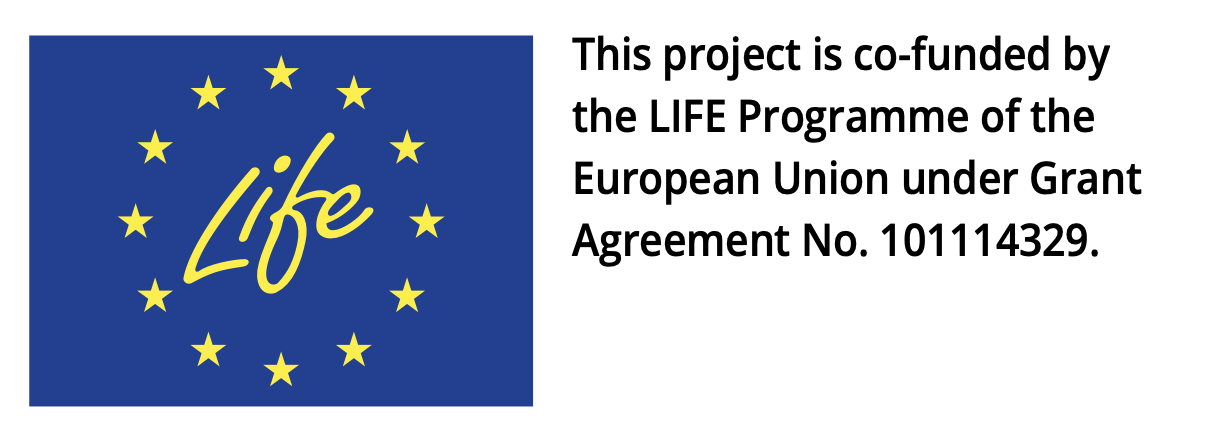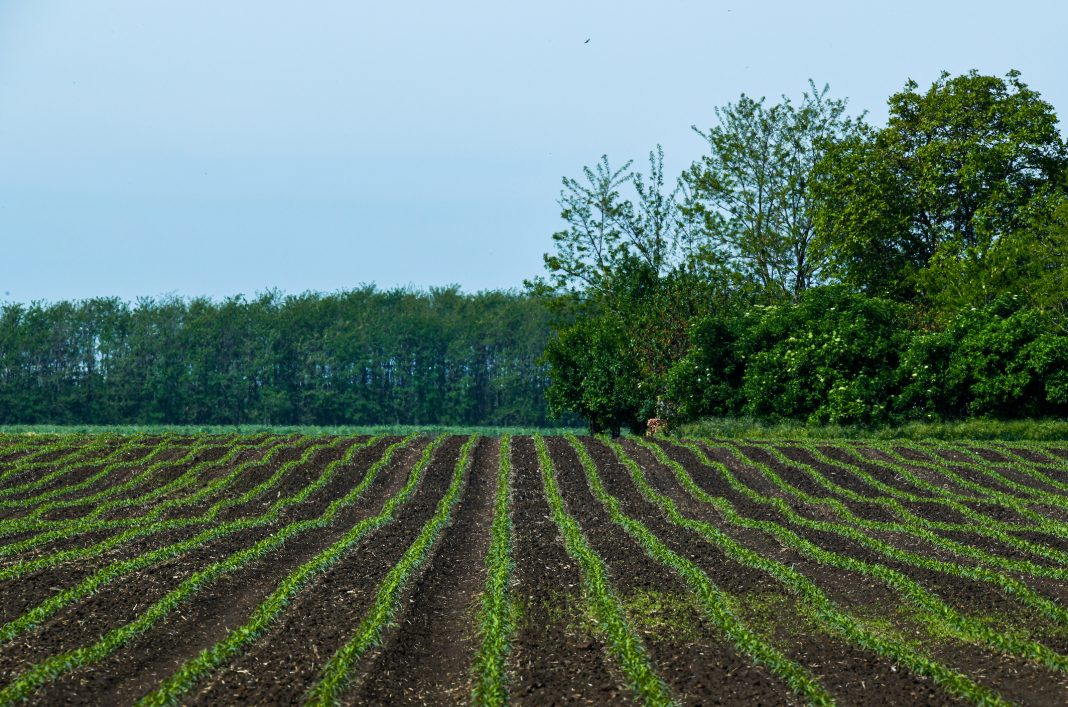The CROPS4LIFE project aims to decarbonise the agri-food system, enhancing the city’s sustainability efforts. Currently, only 1.5% of fresh food consumed locally is sourced from the region. The project promotes a transition to a local, agroecological food system, focusing on short supply chains and generational renewal in farming
Vitoria-Gasteiz’s commitment to transforming its food system began in 2012, alongside its designation as European Green Capital. At that time, local stakeholders initiated a debate about the disconnect between agriculture in the Llanada Alavesa – the bioregion where the city is located – and the food supply model for its population. This civic initiative led to a manifesto advocating for a more sustainable agri-food system, which was adopted by the City Council in 2014, launching the development of the Vitoria-Gasteiz Agri-Food Strategy.
A decade later, the City Food Flow Analysis study shows that only 1.5% of the 67,000 tonnes of fresh food consumed annually in the city originates from Álava. This heavy reliance on national and international food imports poses significant risks to the local economy and ecosystems.
It weakens the competitiveness of family farms, increases their vulnerability to global supply chain disruptions, and reduces the resilience of the food system. These challenges are even more pressing in a municipality where 40% of its 274 km2 area – approximately 11,000 hectares – is agricultural land, and in a context where climate change demands urgent reductions in the impacts of the agri-food value chain.
The Intergovernmental Panel on Climate Change (IPCC) warns that by 2050, the food sector will surpass energy and transport as the leading source of greenhouse gas emissions. (1) In response, Vitoria-Gasteiz has reinforced its sustainability efforts by embracing innovation and continuous improvement, aiming to decouple economic and social wellbeing from environmental degradation.
Vitoria-Gasteiz, in line with its commitment to sustainability, takes on the challenge of working towards the decarbonisation of the different economic sectors and, specifically, of its agri-food system. The city’s Agri-Food Strategy supports the development of a local, competitive food system that encourages a transition from the current model to one grounded in agroecology, food security, generational renewal in farming, local economic support, and the soil’s role as a carbon sink to mitigate climate change. Within this strategy, projects are being promoted to create innovative, scalable technological and social solutions that can act as levers to drive systemic change in the dominant agri-food model.
Short agroecological food supply chains
The revised vision of Vitoria-Gasteiz’s Agri-Food Strategy focuses on transitioning to a territorialised food system, one built around short production and consumption circuits, while maintaining global connections for unmet local needs. This application of the principle of subsidiarity to the food system is being tackled with two particularities. On the one hand, by trying to gradually close the gap between the local and global origin of foodstuffs, which is currently close to a ratio of 1:99 for fresh produce. On the other hand, by prioritising agroecology to harmonise food production with the health of the ecosystem (conservation of biodiversity, recovery of soil fertility, and reduction of net greenhouse gas emissions), the wellbeing of people (food security and sovereignty) and social equity (rural development).
A key challenge lies in the shortage of people engaged in local food production. To address this, Vitoria-Gasteiz seeks to attract new agroecological entrepreneurs by demonstrating that this model is both socially and economically viable. Public policy support and real-world examples are crucial in showing that small-scale, sustainable farming is a viable alternative to industrial agriculture.
The CROPS4LIFE project embodies this vision, serving as a pilot initiative to showcase the feasibility of agroecological production focused on short supply chains. It aims to inspire a new generation of producers and help transform the dominant food system into one that is resilient, fair, and climate-conscious.
CROPS4LIFE project
The CROPS4LIFE project (Carbon Removal governance Outline and Periurban agriculture for a Sustainable food system), co-financed by the European Commission’s LIFE Programme under the 2022 call (LIFE22-GIC-EN-CROPS4LIFE, ID 101114329), falls within the Climate Change Mitigation and Adaptation sub-programme. It aims to demonstrate the socio-economic viability of regenerative, local agriculture to support generational renewal, decarbonisation, and collaborative food system models.
To make short food circuits effective, the project addresses both consumer behaviour and regulatory adaptation. CROPS4LIFE promotes a shift in food purchasing habits by introducing environmental and socio-economic profiles into the marketing process as key decision-making factors. This aims to raise awareness and increase demand for sustainable, locally produced food.
A core element of the project is its governance model, which brings together stakeholders across the food value chain. Data related to production (inputs, yields, profitability), soil health (carbon sequestration, biodiversity), marketing (sales, logistics), and governance (roles, activities) is collected and integrated into a digital adaptive platform. This system aims to identify structural and policy-related barriers that hinder short supply chains, thereby helping to design more effective public policies in collaboration with all relevant stakeholders.
Outcomes and conclusions
Although the CROPS4LIFE project runs until February 2028, it has already delivered notable results within its first two years. On the production side, an Agricultural Test Space (ALEKO) has been established to support aspiring agroecological farmers. ALEKO offers two-year training and mentoring programs for new entrants (‘testers’), helping them transition toward independent farming. The site includes 20 hectares for regenerative arable farming and 80 hectares for extensive regenerative livestock grazing. In 2024, 15 testers enrolled, with over half successfully moving toward entrepreneurship, and three already settling locally.
In terms of marketing, a new local marketplace has been launched, featuring eight regional producers, including ALEKO’s vegetables, as well as locally made cheese, wine, and bread. Integrated into the Open Food Network platform, the marketplace uses a local cargo bike cooperative for eco-friendly distribution.
In terms of governance, notable achievements include the establishment of an association to co-manage the Agricultural Test Space with local authorities, as well as ongoing efforts to form a producers’ cooperative and a marketplace management entity. However, governance has proven more complex and time-consuming than expected, particularly in establishing partnerships with the local private sector.
Biointensive horticulture has demonstrated firm productivity; however, its economic viability depends on scaling up both public and private consumption. A larger base of producers is also needed to build collaborative, socially viable models. Importantly, the legislative framework currently does not accommodate small-scale, short supply chains. Although needed reforms have been identified, their implementation requires collaboration with higher-level administrations.
Ultimately, the project positions small-scale regenerative agriculture not as a competitor to industrial agriculture, but as a complementary and necessary alternative. New entrants are seen as key agents in transitioning the regional food system toward sustainability, resilience, and equity.
References
- IPCC (2023). Climate Change 2023: Synthesis Report. Contribution of Working Groups I, II and III to the Sixth Assessment Report of the Intergovernmental Panel on Climate Change [Core Writing Team, H. Lee and J. Romero (eds.)]. IPCC, Geneva, Switzerland,
pp. 35-115, doi: 10.59327/IPCC/AR6-9789291691647. https://www.ipcc.ch/report/ar6/syr/downloads/report/IPCC_AR6_SYR_FullVolume.pdf



